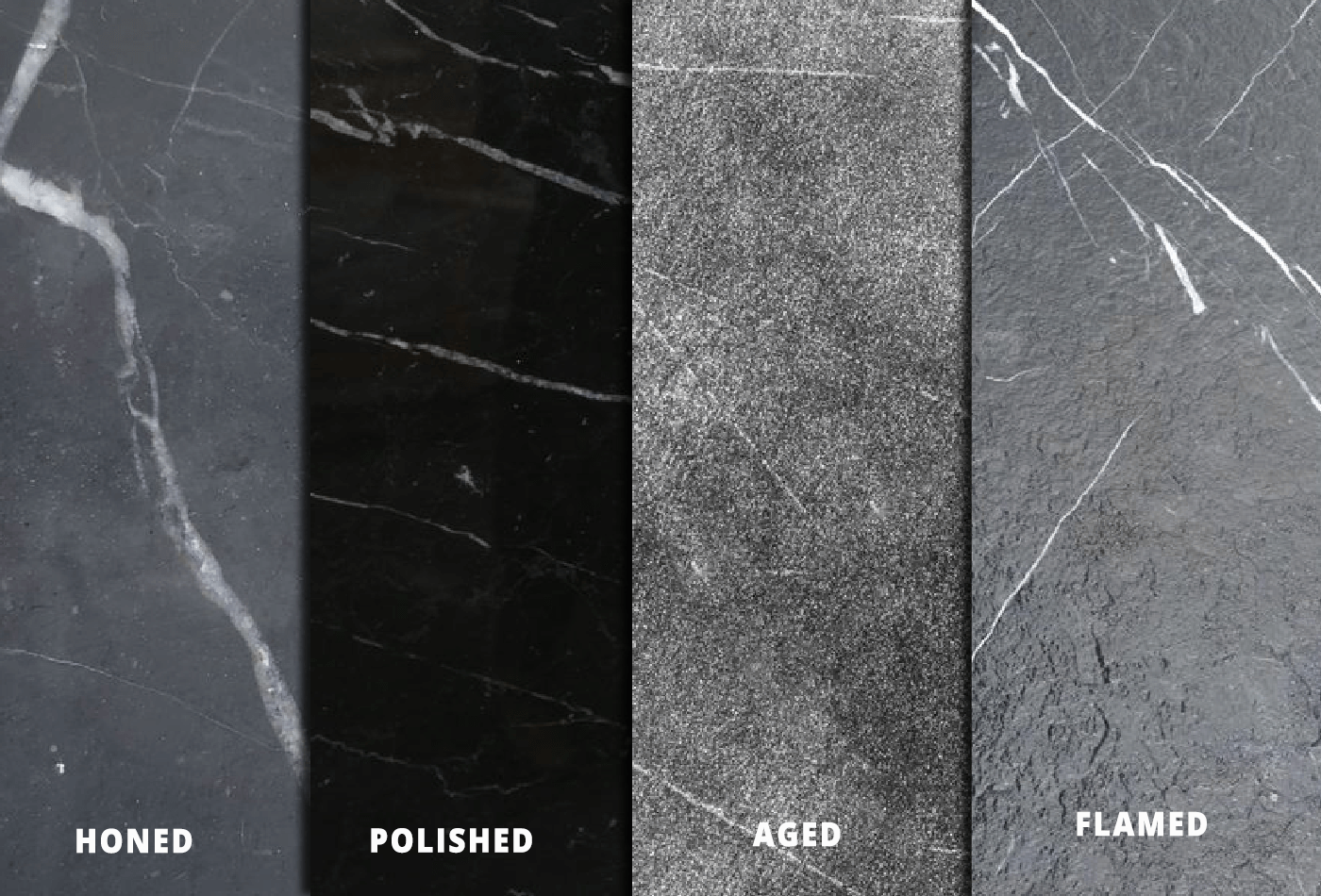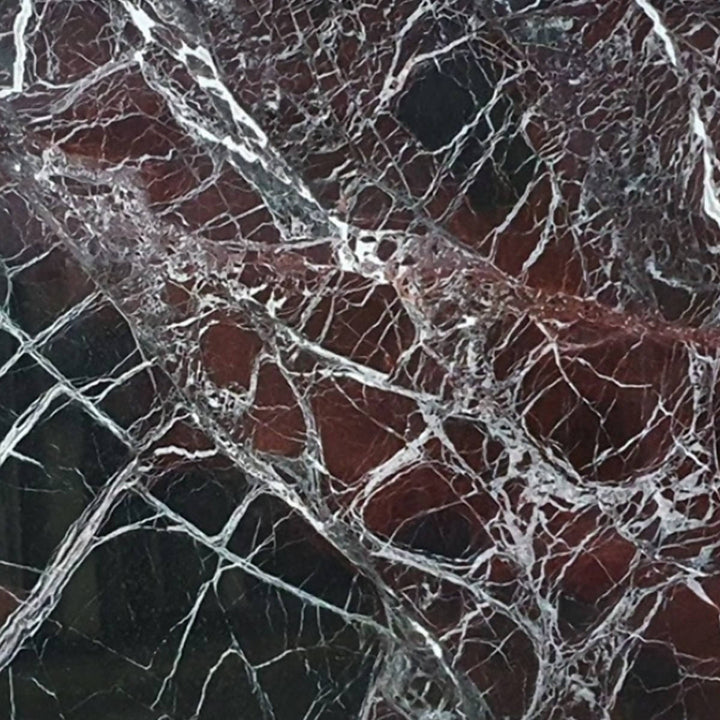Black Marble

Black Marble; Everything You Need to Know
Black marble is a metamorphic natural stone created from limestone that was recrystallized under intense heat and pressure and it can be of different types. The colour of dark marble ranges from the richest blacks to subtler greys. The origin of this type of stone on continental platforms that acquired a significant amount of sediments with copious organic matter and carbonate under anoxic circumstances mostly explains why it is black in colour. Although there are rare exceptions, most black marbles are distinguished by the great variety and presence of fossils. The kind of fossils will differ according to the geomorphic time period and the paleo-environment in which they were deposited.
Black Marble Types
Although the variety of black materials is not as vast as that of cream, beige, or white marbles, they are nonetheless plentiful and diverse enough to allow for the creation of any style of design, from the most modern style to the most traditional one.
Some Popular Black Marble Stones:
-
Marquina Black Marble

Marquina Black Marble, also known as Nero Marquina, is arguably the most well-known black marble in the world because of the intensity and uniformity of its black background, its distinctive white veins, and its rapid rate of manufacture. It is produced from the quarries in Markina, Spain, and is a black reef limestone with fine grain and distinct calcite white veins. The primary features of this stone include a dark grey or black background, white veins that are uneven in thickness, and fine grain that occasionally contains fossils.
-
Portoro Silver Marble

Italian marble known as Portoro Silver is regarded as one of the most expensive marbles in the world. It has been extensively recognised and used from ancient times, when it was physically extracted in the seventh and eighth centuries. It is a calcareous limestone that is black in colour with wavy veins of silver-white running through it. Bitumen, sulphides, and organic materials that were deposited under anaerobic conditions give it its dark colour.
-
Rosso Levanto Marble

A stunning, lavish marble called Rosso Levano has a backdrop that is a rich, reddish-black colour with white and various light-colored streaks that create intriguing patterns.
NERO MARQUINA MARBL
|
ROSSO LEVANO MARBLE
|
PORTORO SILVER MARBLE
|
Black Marble Uses
For flooring, wall cladding, countertops, and even as furniture accents, black-coloured marble is frequently utilised. It is true that black marble is not the only type of marble used for such purposes, but there is no denying that it always adds a touch of exclusivity and elegance to any setting. The use of marble is widespread and has a lengthy history. New building materials have recently entered the market in our country. Natural marble has a contemporary and luxurious undertone. There are numerous varieties of marble black available on the market, but the greater part is black limestones or dolomites, sedimentary rocks whose surface shines when polished.
Black Marble Design Ideas
Slabs of black marble work well with other lighter-colored marbles, notably white marbles. The priceless black and white chessboard pattern is widely used throughout the world. Light tones, such as beiges, cream, light greys, etc., also go really well with marbles in black colour.
The Popularly Chosen Finishes for Interior Use Marble Slabs are
-
Polished marble
-
Aged marble
-
Honed marble
-
Flamed marble
The Popularly Chosen Finishes for Exterior Use Marble Slabs are
-
Sandblasted
-
Bush hammered
-
Tumbled
-
Brushed
-
Leathered Marble
-
Chiselled
Are Black Kitchen Worktops a Good Idea?
Compared to white kitchen counters, black is one of the most considerate colours and conceals spills and dust far better. Black worktops are easy to maintain and don’t show stains and scratches as easily as lighter counters, so you don’t have to worry about them wearing down over time, at least within a quick time frame.
Must Knows about Dark Marble
Black Marble is frequently suggested by manufacturers for flooring. However, it is important to note that darker marble is typically softer than white, beige, etc., making it more prone to scuffing and deterioration from use. Because of this, it is not advised to use them on pavement, especially in locations with heavy traffic, like commercial districts.
Despite the generally low porosity of black coloured marbles, depending on the application kind and the location, sealers may nevertheless be advised.
Cleaning Marble Black Worktops and Floors
As we’ve already mentioned, the Black Marbles are limestone, making them sedimentary rocks with a carbonate composition. Their dark colour is typically brought on by an abundance of organic debris. They react with acids because of their composition. The use of any acidic pH cleanser must therefore be avoided at all costs.
-
Use only PH Neutral cleaners; never use or pour any kind of acid.
-
Dry scrubbing shouldn’t be done using abrasive cleaners.
-
Use only non-acidic cleansers, such as those for ceramics, baths, sealants, etc.
-
Bleach and ammonia should never be combined since the resulting gas is poisonous and deadly.



